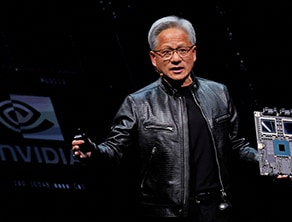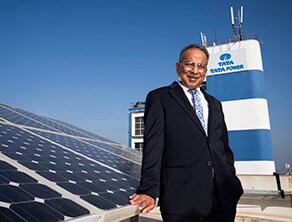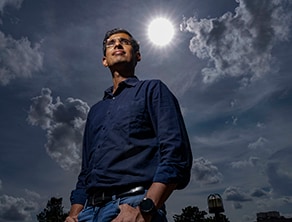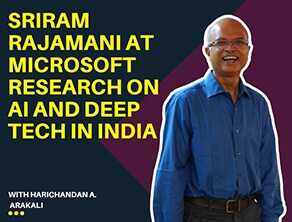From troubles for boAt to art of appreciating whisky: Our top stories of the wee
Read more about why climate change has to reflect in how jobs are created in India, How AI can be harnessed to solve local issues, and the meteoric rise of Nvidia


1) boAt in choppy waters
boAt co-founder and now a TV celebrity thanks to his appearance on Shark Tank India, Aman Gupta famously tells the origin story of the brand name. A for Apple was already famous and a tech giant. So they went with B for boAt, which has an easy recall. Gupta"s boAt grew as Apple suffered in India. In 2019, homegrown players such as boAt and Noise stormed the market as price warriors, democratised the consumer electronics segment by making smartwatches, wearables and hearables affordable, and quickly displaced the market leaders. Five years later, new and unknown pirates, when put together, are doing what once boAt did to the market leaders. Read: Apple, Samsung, JBL, and Sony at the time. Does this boAt have what it takes to survive the choppy waters?
2) Meteoric rise of Nvidia
Every sector has its moment, and a company stands out in that era. It began with trade, and the East India Company made its mark in history. Later, the world was introduced to electricity and The Edison Illuminating Company and Westinghouse Electric Corporation went to battle for the American market. They made a movie about the Ford vs Ferrari tussle to remind the world when automobile companies were at the peak of their performance. As the age of computers dawned, Microsoft conquered the world. Amazon rules the ecommerce and cloud computing business. Apple innovated and became a tech giant when smartphones took over average lives. After feeling the burn of semiconductor chip shortage during the pandemic, this sector has become a centre of attraction, and Nvidia is poised to rule it. Here"s how the foundation was laid.
3) Monsoon watch
Farmers and peacocks are not the only ones that look forward to and pray for a great monsoon in India. Parched rural India begs for it. This year, even the nation’s capital joined in those prayers. Early forecasts of a normal and above-normal rainfall by the India Meteorological Department and Skymet had sent a wave of relief. They raised the expectations of a robust rural recovery and some respite from rising food prices. June 2024 witnessed below-normal rainfall, 17 percent lower than the long-term average. As the monsoon extends its stay in the southern peninsula, northern and western regions have registered a shortfall of 61 percent. Even novices know that more than 50 percent of India"s agricultural land depends solely on the monsoon for irrigation. Here"s an overview of what poor turnout means for India.
1) Greening the grid
India is one of the fastest-growing economies in the world, and that will not change in 2024. The International Monetary Fund has raised India’s annual growth projections from 6.5 percent to 6.8 percent. The Reserve Bank of India, in its latest Monetary Policy Meeting, raised the Gross Domestic Product (GDP) forecast for FY25 to 7.2 percent. When the country is on this growth trajectory, it will consume energy, and the power demand will grow proportionally. In addition, the changing climate, rising temperatures and heat waves are forcing people to seek instant solutions. These options--ACs, coolers, fans, refrigerators--has seen increased demand. Traditional energy sources, such as coal and gas, are helping ramp up thermal power plants. But simultaneously, the Indian power industry is working on making the grid green. How are they handling the paradox? Here"s the answer.
2) Need for green jobs
At the 26th Conference of Parties (CoP26) in Glasgow in 2021, Prime Minister Narendra Modi had announced that India will achieve net-zero emissions by 2070. He also said that 50 percent of India’s energy demand will be met by renewables by 2030, and non-fossil energy capacity will be raised to 500 gigawatts. India has also committed to reducing 1 billion tonnes of projected emissions from now till 2030 and achieving a carbon intensity reduction of over 45 percent over 2005 levels. Indian workforce has a crucial role to play in achieving these goals. Unemployment is one of the biggest issues Modi 3.0 will have to tackle in coming years. Previous promises of creating millions of jobs were never fulfilled, even as the economy grew at a faster pace compared to the rest of the world. Now, the Centre has another opportunity to generate these jobs and use a climate and sustainability lens. Here"s how it can be done.
3) Art of appreciating whisky
Whisky is also called "liquid sunshine", maybe because Scots in the highlands didn"t get enough of the Sun"s mercy. The warmth of the drink can offer unparalleled comfort to the soul. It is a drink that demands your attention it needs savouring. Fill a glass with this liquid gold, hold the court, and trade philosophies. There are various ways of preparing whisky–Irish, Scotch, Japanese, Canadian, Bourbon, Tennessee, Rye, Single Malt, and Blended. Shinji Fukuyo is renowned for his work on Japanese whiskies such as Hibiki, Yamazaki, and Toki. The Japanese executive officer and the chief blender of Suntory Spirits has also created the India-specific Oaksmith, which was introduced in the Indian market in 2019. In his interview with Forbes India, Fukuyo talks about the distinguishing characteristics of Suntory’s whiskies, the different ways whisky can be drunk, and how the industry is changing along with the climate.
4) Harnessing AI for local needs
Forbes India Tech Conversation podcast recently hosted Sriram K Rajamani, corporate vice president and managing director of Microsoft Research India Lab. In the new episode, Rajamani reflects on how computer science and engineering research has evolved at the centre in Bengaluru. He touches upon how artificial intelligence and large language models can be harnessed to solve local needs, some of the technical aspects of how modern AI models work, and best practices from the research lab that could apply to India’s deep tech ecosystem.
First Published: Jun 29, 2024, 10:00
Subscribe Now